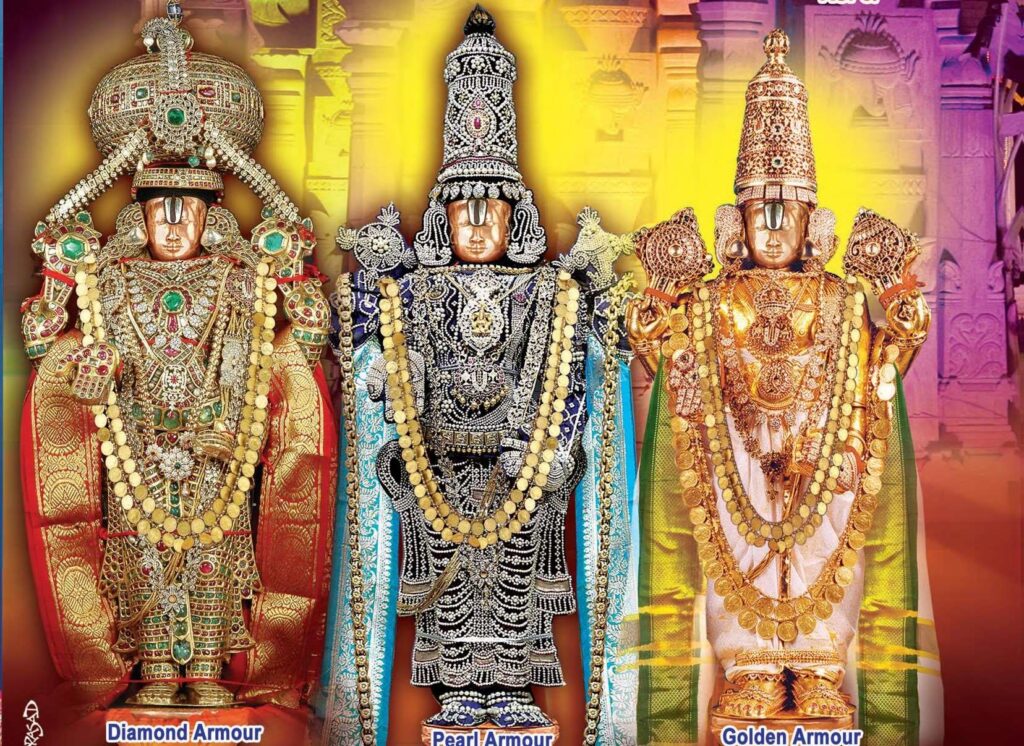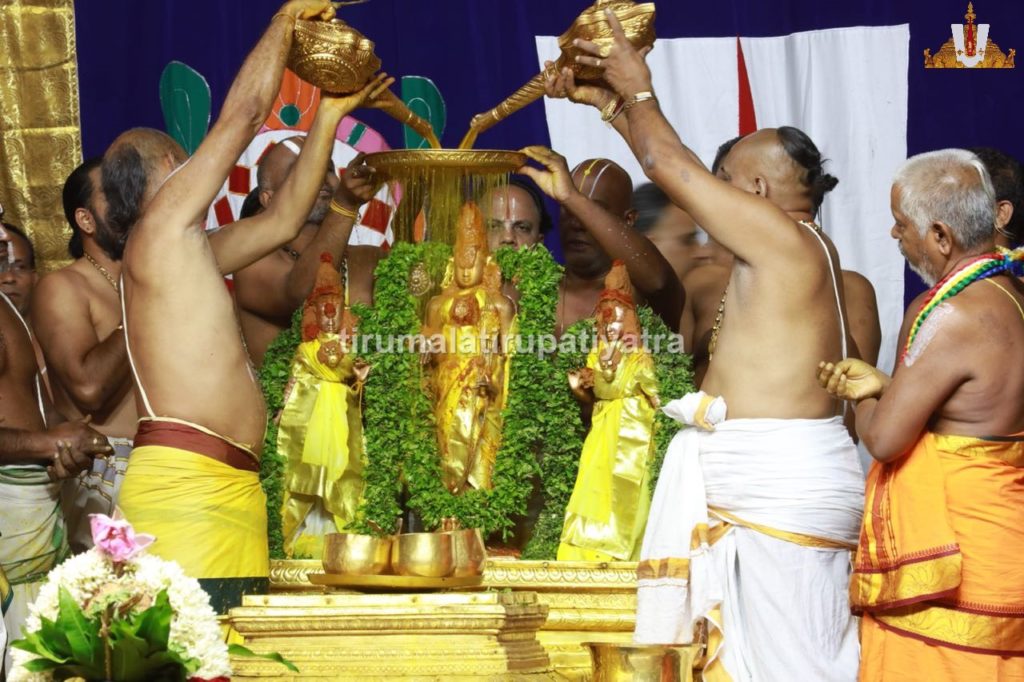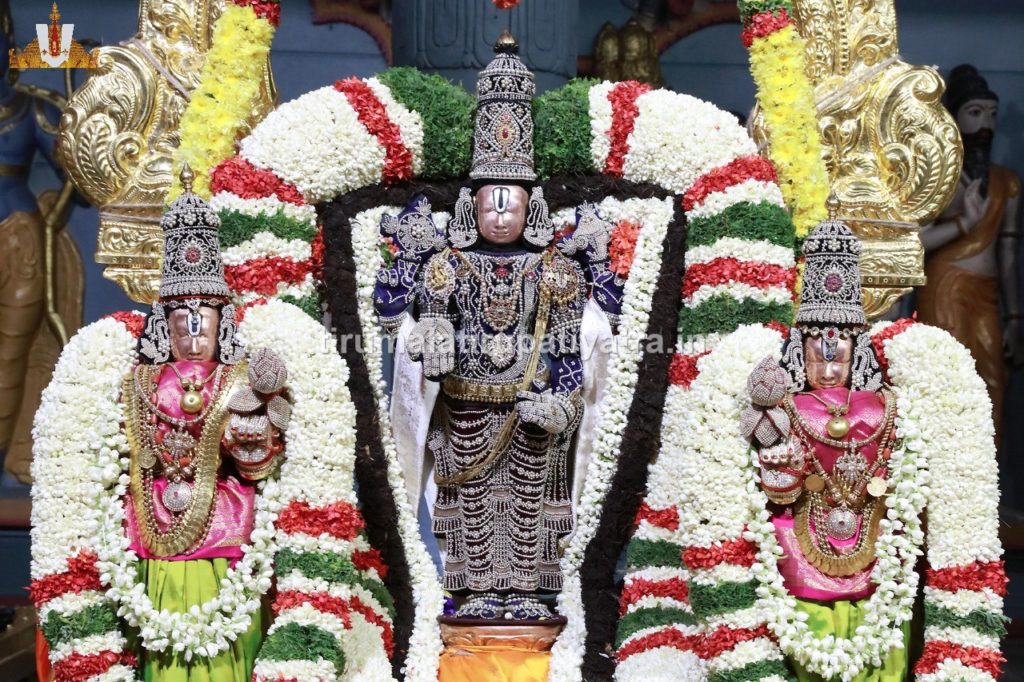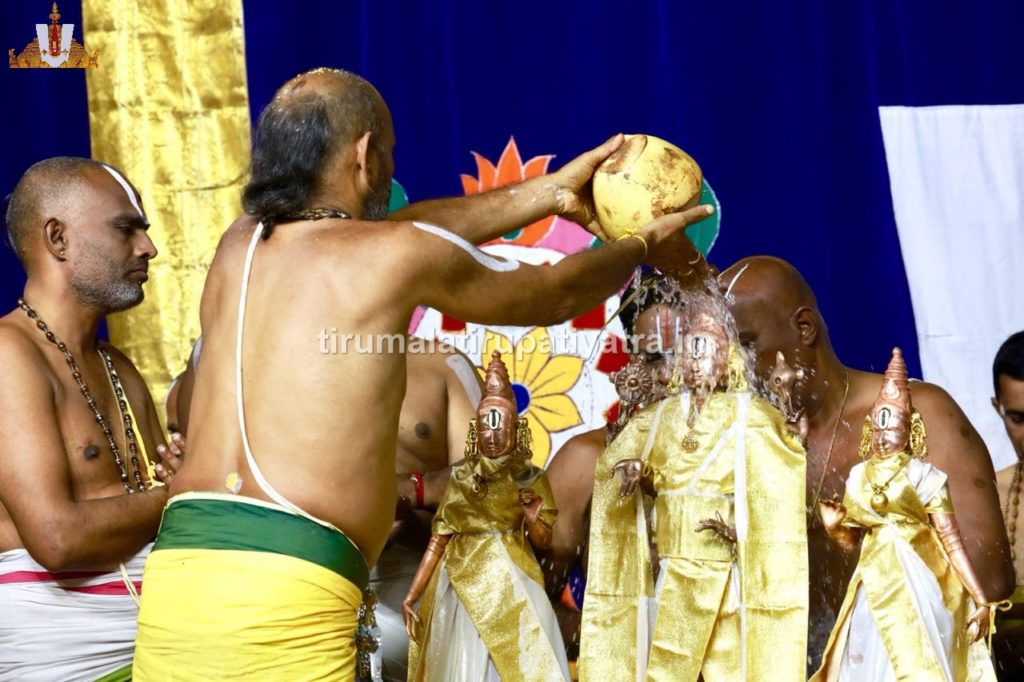Jyeshtabhishekam at Tirumala 2024 / Abhideyaka Abhishekam Jyeshtabhishekam to Sri Malayappa Swami along with His Consorts From 19-06-2024 to 21-06-2024 Jyeshta Star Jyeshta means ‘Elder’ in Sanskrit. You would have heard the phrase ‘Jyeshta bratha pitasamah’, or the elder brother is akin to one’s father. In Vishnu Sahasranama, we have the Lord referred to as Read More
Tag: Jyeshtabhishekam
Jyeshtabhishekam takes place to Lord of Tirumala every year for three days ending on Jyeshta star in Jyeshta month in the Marriage Pandal of Sampangi Circumambulation.
Jyestabhisekam in Tirumala 2023
Jyestabhisekam – Annual Festival A Three-day annual traditional festival ‘Jyestabhisekam’ is being performed in the Tirumala Temple in the month of Jyesta (according to Telugu) month. This special Abhishekam is usually performed every year to protect the Utsava deities of Lord Malayappa swami and His Consorts Sridevi and Bhudevi from damage that might occur while Read More
Jyeshtabhishekam at Tirumala 2022
Jyeshtabhishekam At Tirumala 2022 Jyeshtabhishekam is an annual ritual performed to Sri Malayappa Swami along with Sridevi and Bhudevi at Tirumala in the Jyeshta masam (May / June). The main purpose of this ritual is, to protect the icons/idols with utmost care. Hence, this ritual is conducted. In this ritual, Sri Malayappa Swami along with Read More
Jyestabhishekam 2018
Jyestabhishekam is the Abhisheka ceremony performed to the Lord of Tirumala in the month of Jyesta. This is a three-day ceremony of holy both to Sri Venkateswara which is annually performed to be concluded by the constellation of Jyesta. Abhidheyaka Abhisheka is another name for this ceremony. The word ABHIDHEYA means to protect something from Read More
Significance of Jyeshtabhishekam
Significance of Jyeshtabhishekam Jyeshtabhishekam ( or Abhideyaka abhishekam) is an annual ritual performed to Sri Malayappa Swami along with Sridevi and Bhudevi at Tirumala (Google Maps location) in the Jyeshta masam (May / June). The main purpose of this ritual is, to protect the icons/idols with utmost care. Hence, this ritual is conducted. In this Read More




